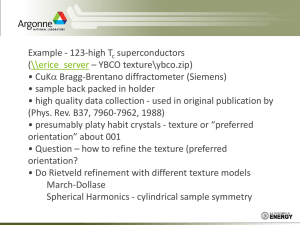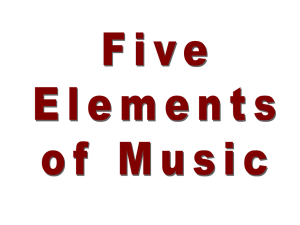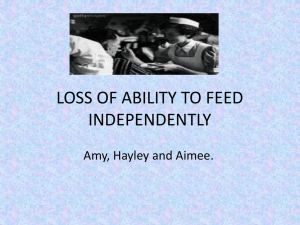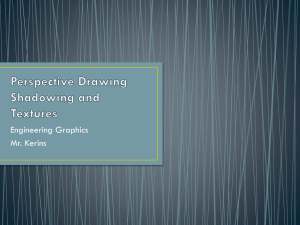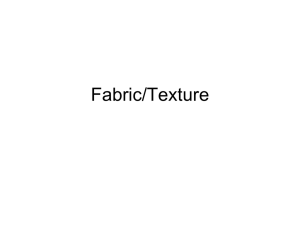pen-and-ink
advertisement
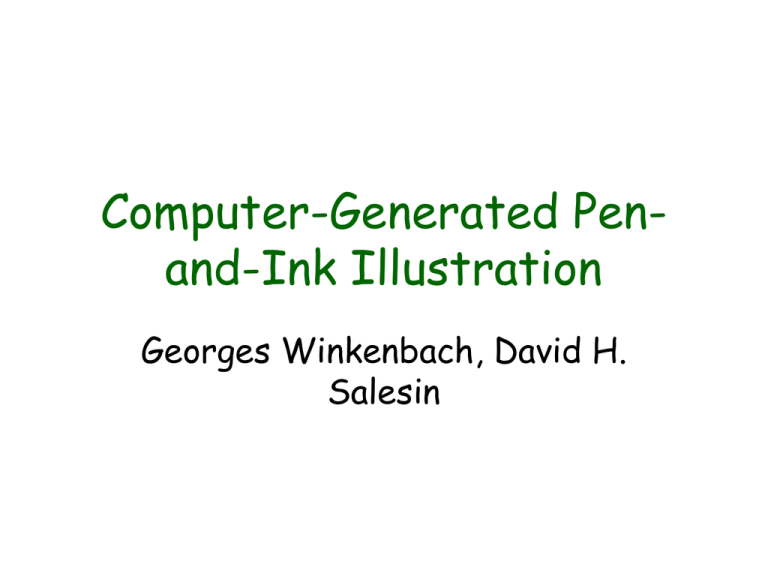
Computer-Generated Penand-Ink Illustration Georges Winkenbach, David H. Salesin Why Pen-and-Ink? • Can convey information better by omitting extraneous detail (ex, medical & hardware manuals) • Less storage than photorealistic images, and more easily reproduced and transmitted • Ideal for outlines, tones and texture. • Blend nicely with text. Basics of Pen-and-Ink Illustration-Strokes • A thin stroke can give a washed-out appearance; a thick stroke can detract from the details • Vary the pen position • Strokes must look natural; the thickness of a line should vary along its length • Wavy lines are good Basics-Tones and texture • The tone is achieved by a combination of strokes. • Strokes can convey both tone and texture • Use equal weight and spacing of lines to create tones • Correct arrangement of tones among adjacent regions is important • Use of indication Basics-Tones and texture Force tone by enhancing contrast or shadows to disambiguate objects • The character of strokes is important: – Crisp, straight lines are good for glass – Horizontal surfaces should be hatched with mostly horizontal lines – Absence of detail indicates glare – Sketchy lines are good for old materials; careful stippling is good for new material Basics-Outlines • Use outlines to convey texture (crisp lines for hard objects) • Use outlines to bring one object forward in the scene • Using indication for drawing outlines is important Computer-generated penand-ink illustration • Two fundamental differences from traditional graphics rendering pipeline: – Dual nature of strokes – Need to combine 2D and 3D information • Stroke density • 2D adjacent regions • Level of contrast Non-photorealistic Rendering Pipeline • Standard pipeline (unchanged) – – – – – Model Assignment of texture (strokes) Lighting model (phong model) Visible surface algorithm (BSP) Shadow algorithm – – – – Maintaining 2D spatial subdivision Rendering of texture and tone (strokes) Clipping (stroke base) Outlining (boundary & interior) • Differences from the standard pipeline: Rendering process • Compute visible surfaces and shadow polygon • Project polygon to build 2D BSP tree and planar map • Visible surface is rendered • Procedural texture for each surface • Clip strokes • Draw outlines Strokes • Nib moving along a basic straight path • Use waviness and pressure function to add character to the strokes Stroke textures • Stroke texture – a collection of strokes used to produce texture and tone • Prioritized stroke texture: – Strokes of highest priority are drawn first – Continue until the proper tone is achieved Resolution Dependence • Existing drawing program do not scale well when printed at different sizes or resolution – Pixel replication yields aliasing artifacts – Drawing same stroke at higher resolution yields overall lighter illustration – Reduction yields large black mass of overlapping strokes • Prioritized stroke textures do not suffer from these problems!! Indication • Indication lends economy to an illustration • Suggest texture without drawing every stroke • Hard to do, paper suggests semiautomated method • W(x, y) = (a + b*distance((x, y), l))^(-c) Indication Expression texture with outline • Associate each stroke texture with boundary or interior outline texture Minimizing outline • Outline is omitted in the presence of sharp changes in tone, and added in the absence of tone changes Accented outlines for shadowing and relief • Thickened lines can provide cues about the 3D aspects of a scene • Edges that cast shadows are rendered with thickened lines Dependence of viewing direction • Viewing direction should be taken into account • Each stroke texture is associated with BRDF – describes outline features in terms of light and viewing directions. Conclusion • Traditional pen-and-ink illustration can be used to communicate visual information effectively • Showed a large number of these techniques can be incorporated as part of the rendering pipeline • Introduced prioritized stroke texture to allow resolution-dependent rendering Robie House Questions? Computer-Generated Penand-Ink Illustration of Trees Oliver Deussen, Thomas Strothotte Presented by Johnny Chang Traditional Illustration of Trees • Tree skeleton is drawn up to the second branching level with silhouette lines and crosshatching on the stem surface. • Use abstract lines or collection of small objects to draw foliage. Traditional Illustration of Trees • Three areas of foliage: – Top of the tree- visualized by few details and its outline. – Half shadow area – more details are drawn to achieve gray level. – Shaded area Synthetic Illustration of Trees • Stem skeleton is represented by silhouette lines and crosshatching • Different types of leaves and illustration styles for abstract leaf representation • Drawing of leaf is modulated by three areas: top, half and deep shadow. Automated Illustration • Create 3D tree model, using xfrog – Store geometry of the tree skeleton – Store leaves as particles each with a position and a normal vector • Draw the trunk and branches (silhouette lines+cross-hatching) • Draw foliage using depth difference algorithm Drawing the tree skeleton • Apply analytical silhouette algorithms (Markosian, Rakarand Cohen) • Skeleton is shaded to find dark regions. Dark regions are crosshatched in the illustration. – Use gray scale to determine stroke size. – Direction of the strokes affected by normal vector of the geometry. Drawing the foliage • Each leaf is represented by the outline of an abstract drawing primitives • Position is determined by 3D leaf position. • Size of primitive is controlled by the user Depth Differences • Use depth-buffer to determine the outline of objects. • Use zero order derivatives for determining lines • The outline of a primitive is drawn if depth difference is above a threshold Depth Differences • Depth z in the camera coordinates is determined from a depth value d Z= z1 z0(d1 - d0)/(z1 - z0) d -(z 1+z0)(d1 - d0)/2(z1 - z0) -(d 1+d0)/2 Abstract Drawing Primitives • 9 polygons was generated to represent leaves from different views • Normals were used to interpolate the shapes of the leaves Level of Abstraction • Visual level of abstraction can be supported by scaling the primitive size • Scale factor: r=w(d/s)+(1-w) , w [0..1] Conclusion • A Framework for pen-and-ink illustration of trees • Tree skeleton is represented by silhouette lines and crosshatching in dark areas. • Foliage is drawn using abstract drawing primitives. • An interpolation scheme to adapt the form of the primitives to the normal vector of the leaves • Depth differences are used to determine what part of the primitives is drawn.

